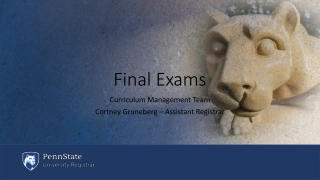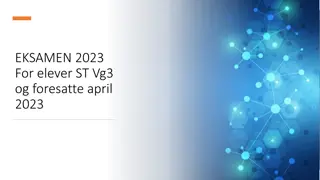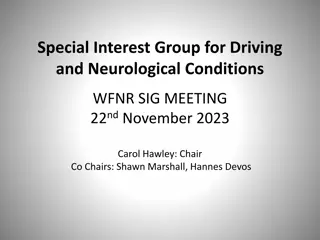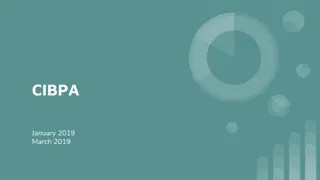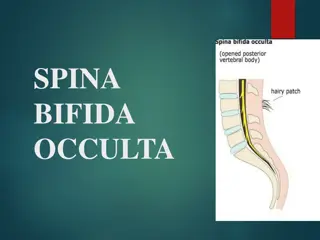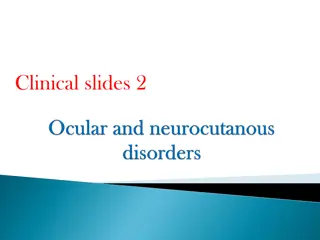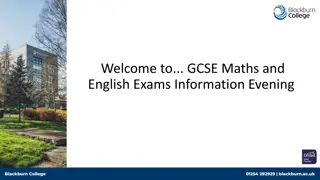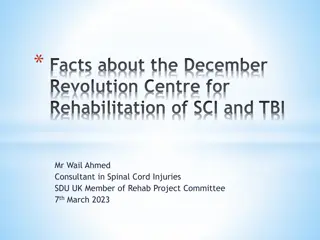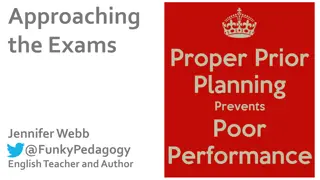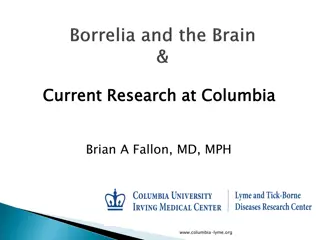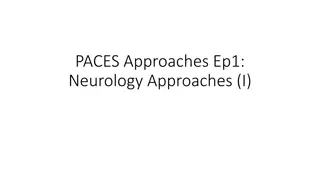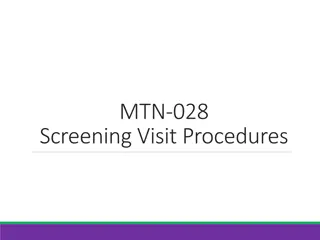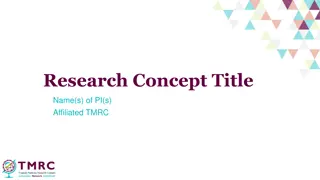Understanding Neurological Exams: Assessment and Procedures
A neurological exam evaluates a person's nervous system using various instruments in a healthcare setting. This comprehensive assessment includes evaluating motor and sensory functions, balance, coordination, mental status, reflexes, and cranial nerve functionality. Assessing mental status involves observing speech clarity and coherence. Motor function and balance are tested by assessing strength, coordination, and joint movements. Sensory exams test the patient's ability to feel different sensations on various body parts. Aphasia, a speech and writing impairment, and memory recall are also part of the assessment.
Download Presentation

Please find below an Image/Link to download the presentation.
The content on the website is provided AS IS for your information and personal use only. It may not be sold, licensed, or shared on other websites without obtaining consent from the author. Download presentation by click this link. If you encounter any issues during the download, it is possible that the publisher has removed the file from their server.
E N D
Presentation Transcript
Neurological Assessment Hassanain Mohammed Kadhim Lecture -10-
What is a neurological exam? Is an evaluation of a person's nervous system that can be performed in the healthcare provider's office. It may be performed with instruments, such as lights and reflex hammers, and usually does not cause any pain to the patient. The nervous system consists of the brain, the spinal cord, and the nerves from these areas.
There are many aspects of this exam, including an 1- assessment of motor and sensory function 2- balance and coordination 3- mental status (the patient's level of awareness and interaction with the environment) 4-reflexes 5-functioning of the cranial nerves. The extent of the exam depends on many factors, including the initial problem that the patient is experiencing, the age of the patient, and the condition of the patient.
Mental status. Mental status (the patient's level of awareness and interaction with the environment) may be assessed by conversing with the patient and establishing his or her awareness of person, place, and time. The person will also be observed for clear speech and making sense while talking. This is usually done by the patient's healthcare provider just by observing the patient during normal interactions
Any defects or loss to speech ,writing and signs due to disease or injuries of the cerebral cortex is called aphasia . The nurse assess the clients recall information ( memory)
Motor function and balance: This may be tested by having the patient push and pull against the healthcare provider's hands with his or her arms and legs. Balance may be checked by assessing how the person stands and walks or having the patient stand with his or her eyes closed while being gently pushed to one side or the other. The patient's joints may also be checked simply by passive (performed by the healthcare provider) and active (performed by the patient) movement
Sensory exam. The patient's healthcare provider may also perform a sensory test that checks his or her ability to feel. This may be done by using different instruments: dull needles, tuning forks, alcohol swabs, or other objects. The healthcare provider may touch the patient's legs, arms, or other parts of the body and have him or her identify the sensation (for example, hot or cold, sharp or dull)
Newborn and infant reflexes. There are different types of reflexes that may be tested. In newborns and infants, reflexes called infant reflexes (or primitive reflexes) are evaluated. Each of these reflexes disappears at a certain age as the infant grows. These reflexes include: Blinking. An infant will close his or her eyes in response to bright lights. Babinski reflex. As the infant's foot is stroked, the toes will extend upward. Crawling. If the infant is placed on his or her stomach, he or she will make crawling motions.
Moro's reflex (or startle reflex). A quick change in the infant's position will cause the infant to throw the arms outward, open the hands, and throw back the head. Palmar and plantar grasp. The infant's fingers or toes will curl around a finger placed in the area. Reflexes in the older child and adult. These are usually examined with the use of a reflex hammer. The reflex hammer is used at different points on the body to test numerous reflexes, which are noted by the movement that the hammer causes.
Reflexes in adult Biceps C5 &6 Triceps C7&8 BrachioradialisC3&6 PatellarL2, 3 ,4 Achilles S1&2 Planter- bibinsky
Evaluation of the nerves of the brain. There are 12 main nerves of the brain, called the cranial nerves. During a complete neurological exam, most of these nerves are evaluated to help determine the functioning of the brain: Cranial nerve I (olfactory nerve). This is the nerve of smell. The patient may be asked to identify different smells with his or her eyes closed. Cranial nerve II (optic nerve). This nerve carries vision to the brain. A visual test may be given and the patient's eye may be examined with a special light.
Cranial nerve III (oculomotor). This nerve is responsible for pupil size and certain movements of the eye. The patient's healthcare provider may examine the pupil (the black part of the eye) with a light and have the patient follow the light in various directions. Cranial nerve IV (trochlear nerve). This nerve also helps with the movement of the eyes. Cranial nerve V (trigeminal nerve). This nerve allows for many functions, including the ability to feel the face, inside the mouth, and move the muscles involved with chewing. The patient's healthcare provider may touch the face at different areas and watch the patient as he or she bites down
Cranial nerve VI (abducens nerve). This nerve helps with the movement of the eyes. The patient may be asked to follow a light or finger to move the eyes. Cranial nerve VII (facial nerve). This nerve is responsible for various functions, including the movement of the face muscle and taste. The patient may be asked to identify different tastes (sweet, sour, bitter), asked to smile, move the cheeks, or show the teeth. Cranial nerve VIII (acoustic nerve). This nerve is the nerve of hearing. A hearing test may be performed on the patient.
Cranial nerve IX (glossopharyngeal nerve). This nerve is involved with taste and swallowing. Once again, the patient may be asked to identify different tastes on the back of the tongue. The gag reflex may be tested. Cranial nerve X (vagus nerve). This nerve is mainly responsible for the ability to swallow, the gag reflex, some taste, and part of speech. The patient may be asked to swallow and a tongue blade may be used to elicit the gag response. Cranial nerve XI (accessory nerve). This nerve is involved in the movement of the shoulders and neck. The patient may be asked to turn his or her head from side to side against mild resistance, or to shrug the shoulders.
Cranial nerve XII (hypoglossal nerve). The final cranial nerve is mainly responsible for movement of the tongue. The patient may be instructed to stick out his or her tongue and speak. Coordination exam: The patient may be asked to walk normally or on a line on the floor. The patient may be instructed to tap his or her fingers or foot quickly or touch something, such as his or her nose with eyes closed.
Musculoskeletal Assessment Inspection muscle for size ,shape ,compare Inspect muscle tendons for contracture(shortening) such as foot drop Inspect for fasciculation or tremor Palpate for tonicity (firm in normal)and flaccidity ( smooth ,coordinated in normal) Abnormal (flaccid- weak or spastic- sudden involuntary muscle contraction)
Inspect for bone deformity and joints swelling assess ROM which can be measured by goniometry
Assess muscle activities as: Sternomastoid Trapezius Deltiod Biceps Triceps Wrist and fingers Grip strength Hip Ankle and feet


